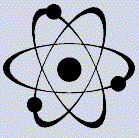Selected Reprints
Cautions and Limitations Associated with Radiocarbon Dating
by Roger Thompson In an earlier article ("How Old Is It" Spring 2006 newsletter) there was a discussion of the development and use of
radiocarbon dating. Using this technique, almost any sample of organic material can be directly dated. However, as with
many techniques, there are certain cautions and limitations that must be taken into consideration. We begin by addressing
some of the cautions:
• First, great care must be taken in collecting and packing gathered samples to avoid contamination. To avoid
contamination, samples must be packed in airtight and chemically neutral materials to avoid picking up more recent
carbon-14 from the atmosphere or packaging.
• Naturally, the size of the sample is important. Samples of sufficient size are better because purification
and distillation remove some matter. Although new techniques for working with very small samples have been developed, these
are very expensive and still somewhat experimental.

• Finally, although radiocarbon dating is the most common and widely used chronometric technique in archaeology
today, it is not infallible. In general, single dates should not be trusted. Whenever possible multiple samples should be
collected and dated from associated strata. The trend of the samples provides a better estimate of the actual date of the
material being dated.
In addition to those cautionary considerations, certain limitations are also associated with radiocarbon dating:
• Because the decay rate of carbon-14 is logarithmic, radiocarbon dating has a significant upper limit in terms
of age. The precision for dating depends in most part on the half-life of the radioactive isotope involved. After an
organism has been dead for 60,000 years, so little carbon-14 is left that accurate dating becomes impossible. At the same
time, radiocarbon dating is not very accurate for fairly recent deposits because so little decay has occurred.
• Also, the ratio of carbon-14 to carbon-12 in the atmosphere has not been constant. Radiocarbon samples taken
and cross-dated using other techniques have shown that the ratio of carbon-14 to carbon-12 has varied significantly during
the history of the Earth. This variation is due to changes in the intensity of the cosmic radiation bombardment. For
example, due to the recent depletion of the ozone layer in the stratosphere, it is expected that there is more carbon-14
in the atmosphere today than there was 30-40 years ago. To compensate for this variation, dates obtained from radiocarbon
laboratories need to be corrected using standard calibration tables. Thus, when reading archaeological reports it is
important to ensure that radiocarbon-14 dates have been properly calibrated.
No technique is perfect and radiocarbon dating is no exception. Although radiocarbon dating is accurate in principle,
the precision is very dependent on the care with which the samples have been obtained and handled. Even with its various
limitations, radiocarbon dating remains a significant scientific discovery and has been used to date some of the most
important archaeological finds, including the Dead Sea Scrolls, the Iceman, and the controversial Shroud of Turin.